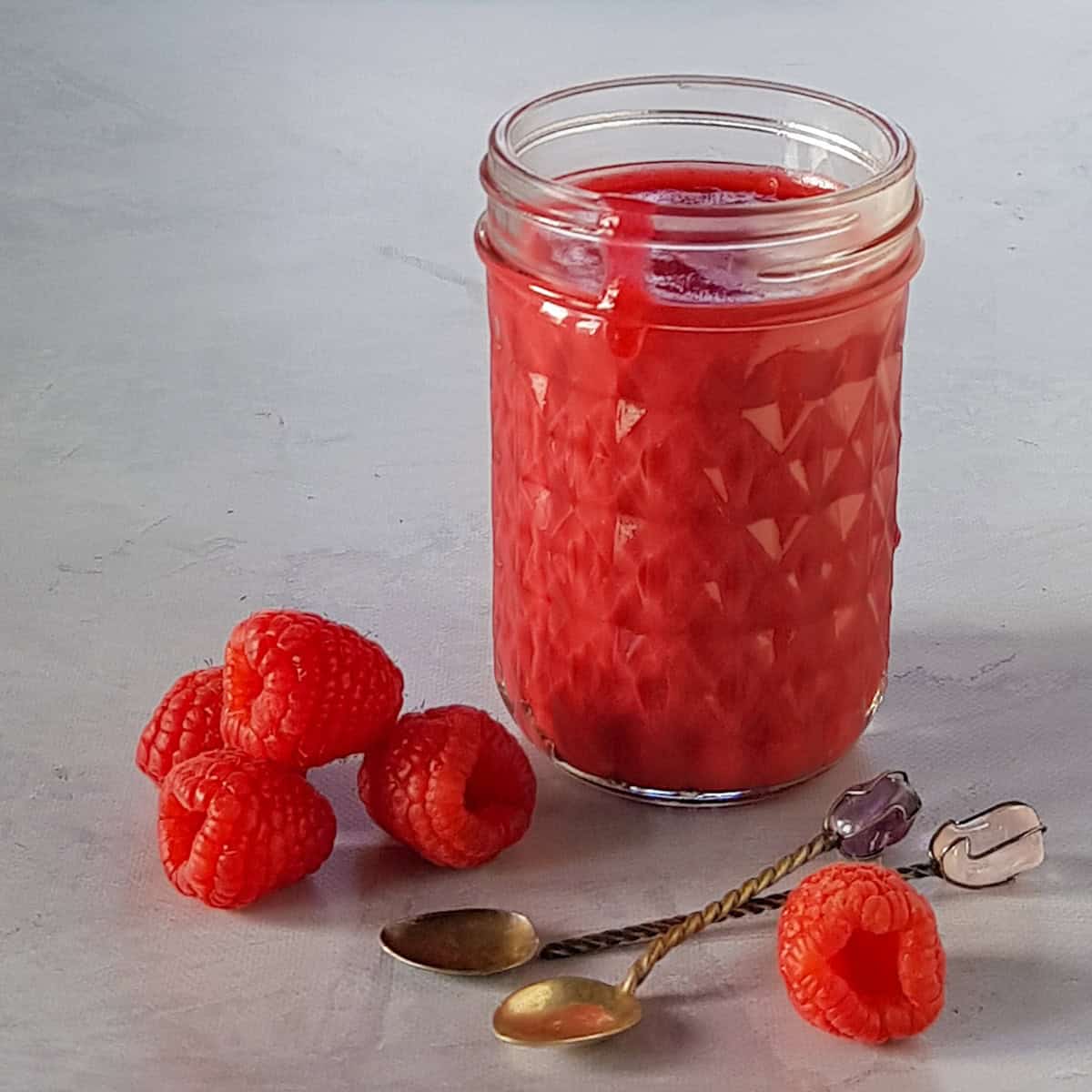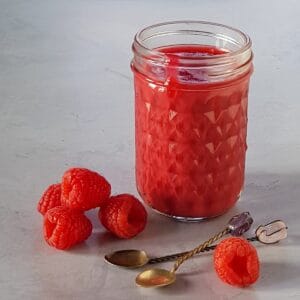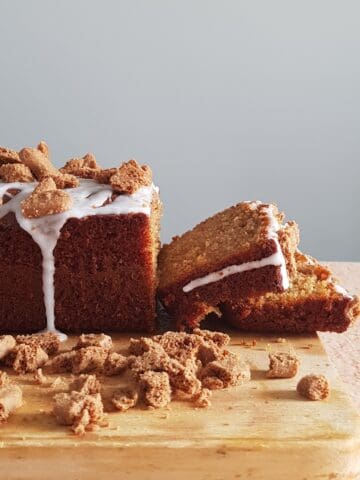If you like lemon curd, you're going to love this raspberry curd. It's a vibrant twist on the classic curd recipe: tart yet sweet, creamy yet refreshing, and stunningly pink in color. Whether you're looking for a unique curd recipe for a special brunch, or you simply want to learn how to make curd beyond the standard lemon variety, this raspberry version is a must-try.

Why Raspberry Curd?
Most people know lemon curd, but fruit curds can be made with all sorts of flavors-lime, orange, passionfruit, and yes, raspberries. Raspberry curd is special because it balances the tart brightness of berries with the richness of butter and eggs. The result? A curd that's just as versatile as lemon curd, but with a more complex fruity note and a naturally gorgeous color.
Unlike some fruit spreads, raspberry curd is smooth, not jammy. The texture is almost custard-like, thanks to the eggs that thicken it. This makes it perfect for layering in desserts, swirling into yogurt, or spreading on scones.
Common Issues When Making Curd (and How to Avoid Them)
If you've ever tried to make curd before, you might have run into a few common frustrations:
- Curdled eggs: If you heat the mixture too quickly, the eggs can scramble. To avoid this, always cook curd over low heat and whisk constantly.
- Too many seeds: Raspberries are notorious for their tiny seeds. Straining the curd through a fine-mesh sieve after cooking will give you a silky-smooth result.
- Curd not thickening: Patience is key. The curd will thicken as it cooks, but it also continues to firm up as it cools. Don't panic if it seems a little thin at first.
Ways to Use Raspberry Curd
This curd is endlessly versatile. Here are a few favorite ways to enjoy it:
- Spread it on freshly baked scones, biscuits, or pancakes.
- Swirl it into cheesecake batter before baking for a raspberry ripple effect, or add it as a topping to a no-bake curd cheesecake.
- Use it as a filling for cakes, cupcakes, or macarons.
- Spoon it into mini tart shells and add crushed pistachios for an elegant, simple dessert.
- Layer it into a parfait with yogurt and granola.
Ingredient Notes
- Raspberries: Fresh raspberries work beautifully, but frozen raspberries (thawed and drained) are an excellent option when berries are out of season.
- Lemon: A touch of lemon juice enhances the tartness and helps balance the sweetness.
- Butter: Gives curd its silky, rich texture. Unsalted butter works best.
- Egg: The thickening agent. Be sure to whisk it well to avoid streaks of cooked egg.
- Sugar: Balances out the tartness of the berries and citrus.
Veelgestelde vragen
No-frozen raspberries (thawed and drained) work just as well, making this recipe year-round friendly.
This usually happens if the curd was cooked too quickly. Whisking constantly over low heat prevents this.
If your curd feels a little too thin, let it cool completely in the fridge. It naturally thickens as it chills.

Raspberry Curd Recipe
Equipment
- Small saucepan
- Fine-mesh sieve
- whisk
- Blender or immersion blender
- Sterilized glass jar with lid
Ingredients
- 1 cup raspberries (fresh or frozen and thawed)
- 1 lemon
- 5 tablespoon unsalted butter
- 1 egg (large)
- ⅓ cup granulated sugar
Instructions
- Puree the raspberries using a blender or immersion blender until smooth. Set aside.
- Melt butter with lemon juice: In a small saucepan over low heat, combine the lemon juice and butter. Stir until the butter has melted.
- Whisk egg and sugar: In a separate bowl, whisk together the egg and sugar until smooth. Slowly add this mixture to the saucepan, whisking constantly to prevent curdling.
- Add raspberries: Stir in the raspberry puree and continue cooking over low heat, whisking continuously, until the mixture thickens enough to coat the back of a spoon (about 5-7 minutes).
- Strain: Press the curd through a fine-mesh sieve into a sterilized jar to remove seeds and ensure a silky texture.
- Cool and store: Let cool completely before sealing with a lid. Store in the refrigerator for up to 2 weeks.
Notes
- For a seedless curd, strain the raspberries before adding them to the saucepan.
- Always cook curd low and slow-too much heat will scramble the eggs.







Leave a Reply